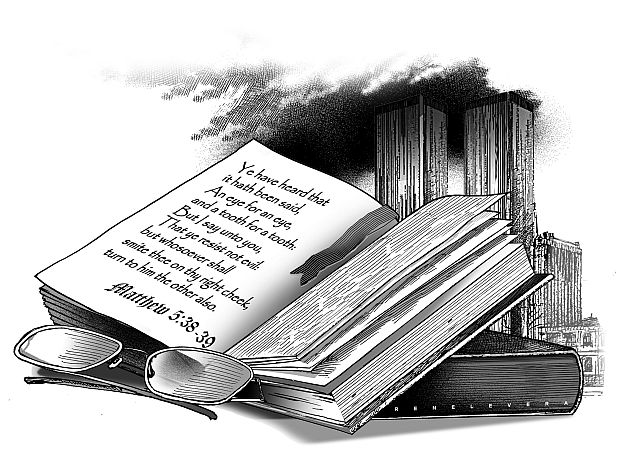
In the morning of September 11, 2001, planes slammed the North and South towers of the World Trade Center complex in New York City, killing 2,996 and injuring over 6,000 people. Within two hours, both towers collapsed.
The strike, code named “9/11,” described by then US President George W. Bush as despicable, might have topped all other terrorist attacks in history. From the other side of the globe, I saw the event unfolding on TV and did not know how to react.
Perhaps my reaction came later in the form of a poem. Richard Drew, a photographer, took a shot of a man, who had jumped from one of the burning towers and was falling through the air. This photograph, captioned “The Falling Man,” has haunted the world. I use the caption as the title of my poem.
A magazine called him “The Falling Man,”
The one who jumped or dropped from the North Tower
That dreadful day, eleventh of September,
Photographed falling as the fire began
To burn the tower down, and people ran
Or leapt to bolt its flames—the lens’ capture
Of the poor man is perfect, which will ever
Be in our minds, banish it if we can.
The image shows the man still in the air
And him no time or gravity can seize.
I see him as a feather that God blesses
With His gentle breath that is everywhere.
Yet what this photograph does is just freeze
The moment—but the moment freezes us.
Why do I think of 9/11? It so happened that a meditation on a passage from Matthew — in which Jesus said, “You have heard that it was said, ‘An eye for an eye and a tooth for a tooth.’ But I say to you, offer no resistance to one who is evil. When someone strikes you on [your] right cheek, turn the other one to him as well” — drew me to an article that appeared in the New York Times on September 25, 2015, written by David W. Dunlap and entitled, “Memorial, An Enduring Message of Forgiveness.”
Dunlap writes that, as the World Trade Center collapsed, a page from the Bible containing the passage permanently fused with a chunk of steel. The exact text, which comes from the Gospel of Matthew, reads: “Ye have heard that it hath been said, An eye for an eye, and a tooth for a tooth: But I say unto you, That ye resist not evil: but whosoever shall smite thee on thy right cheek, turn to him the other also.”
“A firefighter found the fragment in March 2002, under the Tully Road, a temporary truck route that covered the last remnants of the south tower,” Dunlap adds.
The passage forms part of a longer text which deals with how one should confront one’s enemy — not by violent aggression but, according to scripture scholar Raymond E. Brown, an “aggression transmuted into a strategy for winning through the wisdom of love.”
In other words, he says, the Christian may fight back through psychological or moral resistance or “media fighting,” as exemplified by Mahatma Gandhi and Martin Luther King Jr.
As to the steel chunk, with which the Gospel passage had fused, what do we make of it? And why, of the many pages of the Bible, the particular page containing the text?
One can always dismiss the matter as pure coincidence. But not Joel Meyerowitz, a photographer who happened to be nearby and to whom the fireman gave the steel fragment. When he received it, Meyerowitz remarked, “My astonishment at seeing the page that the Bible was open to made me realize that the Bible’s message survives throughout time, and in every era we interpret its teachings freshly, as the occasion demands.”
Once again, history has shown us that Jesus’ message endures and sometimes comes to us as literally ironclad.